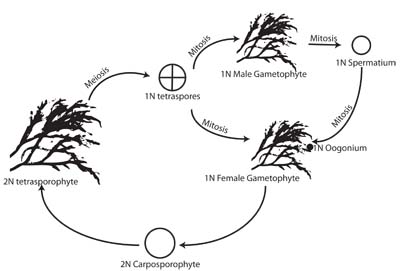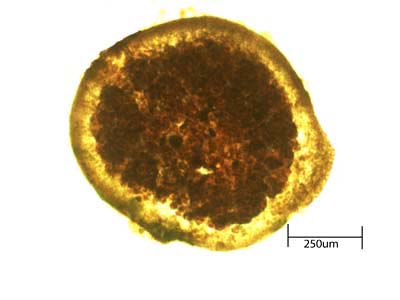Endocladia muricata has an isomorphic life history, meaning that the gametophyte and sporophyte have the same morphology. In the intertidal, the tetrasporophyte phase is found more often than the gametophyte phase (1). The reason for the numerical difference between life history phases is unknown. It was hypothesized that the phases may have different physiological responses to heat and desiccation stresses. However, testing of this hypothesis has revealed that the different life history phases are similar responses to environmental stresses(2).
In the field, reproductive Endocladia can be identified by the yellow tips which contain cystocarps. The dark bulges in the branches contain cystocarps. The transparent, yellow bulges are pericarps that have released their zygote. Photo taken on a dissecting microscope 0.8X.
Cross-section of a cystocarp within its pericarp. The dark red area is the cystocarp and the yellow area is the pericarp. Photo taken on a compound microscope at 40X.
|



